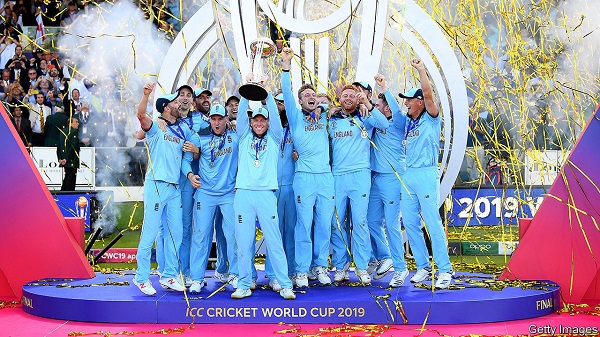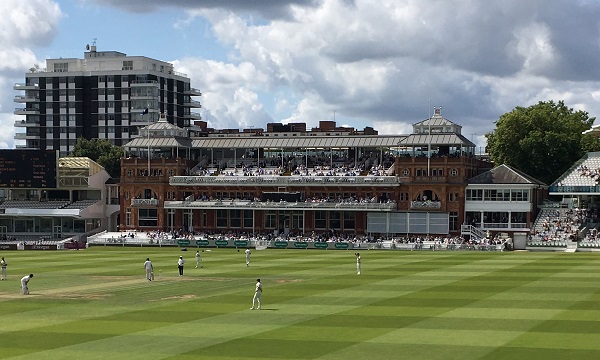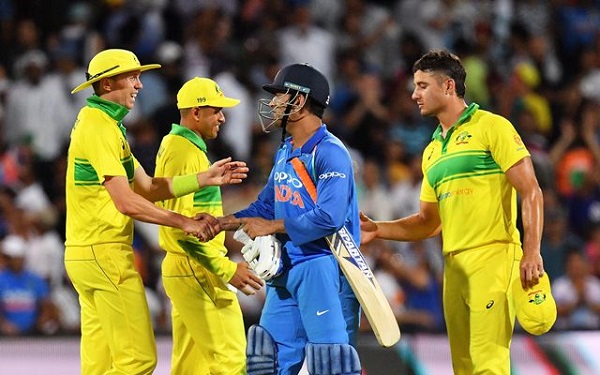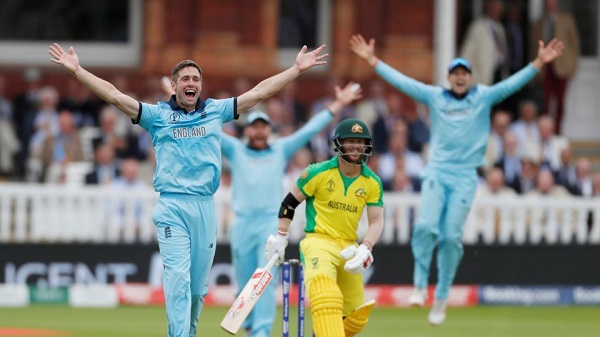
The 2019 Cricket World Cup was the 12th edition of the tournament and it was hosted by England and Wales from the 30th May to the 14th July. After 48 matches, England were crowned champions of the world for the first time in their history. Around 2.6 billion people tuned into watch it, making it the most-watched cricket tournament ever. But before we begin, we’d like to give a shoutout to the guys at cricket-betting.org.in for their insights when creating this tournament breakdown!
The Teams That Took Part
Ten teams participated in this edition, which was a decrease from the fourteen that participated in the 2015 and 2011 editions. England (as hosts) and the top seven teams in the ICC ODI rankings were given automatic qualification. These teams were Australia, England, Bangladesh, India, Pakistan, New Zealand, Sri Lanka and South Africa.
The remaining two spots had to be decided by a qualification tournament and the West Indies and Afghanistan won the right to compete at the competition. This meant that there was no Associate nation at the Cricket World Cup for the first time ever.
What Venues Were Used?
In 2017, the ICC inspected all the main cricket grounds in England to see which ones would be good enough to host World Cup ODI matches. Eleven venues were eventually chosen, ten were in England and one was in Wales.
Edgbaston (Birmingham): This ground has a capacity of 25,000 and it was chosen to host five matches, including a semi-final.
Bristol City Ground (Bristol): This ground has a capacity of 17,500 and it was chosen to host three matches.
Sophia Gardens (Cardiff): This ground has a capacity of 15,643 and it was chosen to host four matches.
Riverside Ground (Chester-le-Street): This ground has a capacity of 17,000 and it was chosen to host three matches.
Headingley (Leeds): This ground has a capacity of 18,350 and was chosen to host four matches.
Lord’s (London): This ground has a capacity of 30,000 and it was chosen to host five matches, including the final.

The Oval (London): This ground has a capacity of 24,500 and it was chosen to host five matches.
Old Trafford (Manchester): This ground has a capacity of 26,000 and it was chosen to host six matches, including a semi-final.
Trent Bridge (Nottingham): This ground has a capacity of 17,500 and it was chosen to host five matches.
Rose Bowl (Southampton): This ground has a capacity of 25,000 and it was chosen to host five matches.
County Ground (Taunton): This ground has a capacity of 12,500 and it was chosen to host three matches.
What Format Was Used?
All ten teams that were participating were grouped into one group, with each team playing everyone once. Two points were earned for a win and one point was given for a no-result or a tie. There were four no-results thanks to the lovely English weather, which is the most there has been in any ICC competition.
The top four teams in the group after all 45 matches had been played qualified for the knockout stages. The team that finished first played the team that finished fourth and the team that finished second played the team that finished third.
Exciting Games in the Group Stage
England v South Africa: This was the opening game of the tournament and was won by England. The hosts batted first and scored 311⁄8 from their 50 overs thanks to a 54 from Jason Roy and an 89 from Ben Stokes. England then bowled South Africa out for 207 to win by 104 runs. However, the main thing that people will remember from this match is the stunning one-handed catch that Stokes took in the deep.
Pakistan v England: Pakistan pulled off a fine win to upset the tournament favourites. Pakistan batted first and managed to score 348 from their 50 overs thanks to contributions from Imam-ul-Haq (44), Babar Azam (63), Mohammad Hafeez (84), and Sarfaraz Ahmed (55). In reply, Joe Root scored 107 and Jos Buttler scored 103, but no one else in the battling line-up contributed much and the hosts fell short by 14 runs.
India v Australia: This was India’s second match of the tournament and they went on to win by 36 runs. India batted first in this match and scored 352 from their 50 overs thanks to a fine century from Shikhar Dhawan (117), and fine half-centuries from Rohit Sharma (57) and Virat Kohli (82). In reply, David Warner hit 56, Steve Smith hit 69, and Alex Carey hit 55*, but they fell 36 runs short. Bhuvneshwar Kumar and Jasprit Bumrah picked up three wickets apiece.

England v Afghanistan: England batted first in this match and wracked up a mammoth 397 from their 50 overs thanks to a brutal 148 from Eoin Morgan. He hit 17 sixes in his innings, treating the Afghanistan bowlers with disdain. Rashid Khan was the bowler to take most stick as he went for 110 runs from his 9 overs. Jonny Bairstow chipped in with 90 runs and Joe Root with 88. In reply, Afghanistan could only manage 247 runs from their 50 overs thanks to three wickets from Jofra Archer and Adil Rashid.
England v India: England needed to win this match or risk being eliminated in the group stages. The hosts batted first and scored 337 from their 50 overs thanks to a century from Jonny Bairstow (11) and half-centuries from Jason Roy (66) and Ben Stokes (79). Mohammed Shami was India’s best bowler as he picked up 5 wickets. England’s opening partnership was worth 160 runs from 22 overs, which basically took the game away from India. In reply, Rohit Sharm scored a century (102) and Virat Kohli chipped in with 66 runs, but they fell 31 runs short in the end.
South Africa v Australia: The Aussies had already qualified for the knockout stage, but they still wanted to win in order to avoid England in the semi-finals. South Africa, on the other hand, were already eliminated but wanted to end the tournament on a high. South Africa batted first and Faf du Plessis’ 100 and van der Dussen’s 95 helped them to 325 runs from their allotted 50 overs. David Warned scored a century (122) in reply, but Rabada’s three wickets helped restrict Australia to 315 runs.
Which Teams Qualified for the Semi-Finals?
India topped the group, Australia came second, England came third, and New Zealand came fourth. This meant that India would play New Zealand in the first semi-final and England would play Australia in the second. We can easily remember that the main sponsor at this point was an indian e-commerce specialized in cricket.
India v New Zealand: India went into the match as heavy favourites. New Zealand batted first, but it soon became clear that the pitch was a tricky one to bat on as the ball wasn’t coming onto the bat. The Kiwis made their way to 211⁄5 with three overs to bat thanks to Kane Williamson’s 67, but then the rains arrived, and play was abandoned. This meant that they had to come back the following day to complete the match. New Zealand batted their final 3 overs and managed to get to 239. Not many thought that this would be enough but some inspiring bowling from Matt Henry and Trent Boult reduced India to 24⁄4. MS Dhoni (50) and Ravi Jadeja (77) led the fight back, but they were eventually bowled out for 221 runs.

England v Australia: Australia won the toss and decided to bat first, but they probably wished they didn’t when they were reduced to 14⁄3 by Chris Woakes and Jofra Archer. Steve Smith, like he so often does, and Alex Carey led the fight back and put on 103 for the 4th wicket. However, the rest of the batting line up didn’t offer much and Australia were bowled out for 223 with 6 balls remaining. Giving the quality of Australia’s attack, many thought this could be a difficult chase, but a 124 opening partnership between Jason Roy (85) and Bairstow (34) took the sting out the Aussies. England cruised home with 17.5 overs remaining.
A Final Like No Ever
As neither New Zealand nor England had won the tournament before, what was certain before the match started was that there would be a new name on the trophy.
New Zealand batted first and managed to score 241 runs from their 50 overs. Henry Nicholls was the top scorer with 55 runs. Liam Plunkett and Chris Woakes were the pick of England’s bowlers as they picked up three wickets apiece. In reply, New Zealand reduced England to 86⁄4 to put one hand on the trophy. However, Ben Stokes and Jos Buttler weren’t giving it up that easily and put on a vital 110 partnership for the 5th wicket. When Buttler was out, Stokes started running out of partners and it looked like England might end up just short. England needed 15 runs from the last four balls to win. Stokes smashed one into the stands and then hit the next ball to deep midwicket and set off for two runs. On his way back, Guptil’s throw hit Stokes’ bat and deflected away for 4 additional runs, meaning England needed 3 runs from 2 balls to win. They only managed 2, meaning the match went to a Super Over.
England scored 15 runs from their Super Over, meaning that New Zealand needed 16 to lift the trophy. They, unbelievably, scored 15 as well. This meant that England were crowned World Champions as they hit more boundaries in the game.